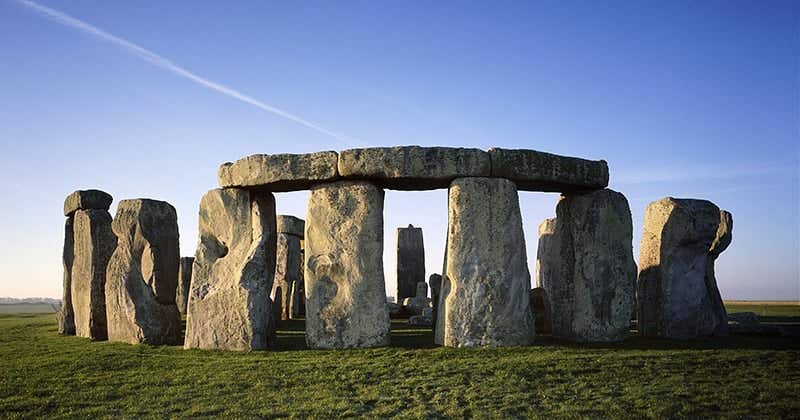Stonehenge may have been more than a spiritual site, study finds
Stonehenge’s distant stones reveal its role as a unifying monument in ancient Britain, blending politics, religion, and astronomy.

Building Stonehenge took extraordinary effort, with some of its massive stones transported from quarries up to 140 miles away. (CREDIT: CC BY-SA 4.0)
The origins of Stonehenge have puzzled and inspired people for generations. Now, new findings offer a clearer picture of why this ancient monument held such powerful meaning. Recent work by archaeologists reveals that Stonehenge may have stood as more than a spiritual site—it may have symbolized political unity among far-reaching Neolithic communities.
In a study published in Archaeology International, researchers traced the massive six-tonne Altar Stone at Stonehenge to northern Scotland. This discovery supports earlier findings that most of the monument’s stones came from distant places. It also strengthens the idea that Stonehenge was built to unite people across the British Isles.
A Testament to Shared Purpose
The feat of building Stonehenge required hauling stones hundreds of miles. Some came from as far as 140 miles away in southwest Wales, while others traveled over 600 miles from northeast Scotland. Unlike other prehistoric stone circles in Britain, which used nearby materials, this monument relied on stones brought from far-flung regions. That choice speaks to its deeper purpose.
Professor Mike Parker Pearson from University College London believes this design was no accident. “The stone circle may have served as a monument of unification,” he said, “celebrating eternal links between peoples, ancestors, and the cosmos.” His comments suggest Stonehenge stood as a physical expression of shared identity and belief.
Professor Richard Bevins of Aberystwyth University highlighted the precision of their geological work. “Our geological investigations resemble forensic science,” he said. The research team, drawing from several disciplines, worked together to trace both the bluestones and now the Altar Stone to their original sites.
Early Human Cooperation
The shape and position of the Altar Stone link it to “recumbent stone circles” found in northeast Scotland. This connection hints at deeper relationships between regions. Archaeologists believe the stones may have been diplomatic gifts, reinforcing ties and forming alliances between early communities. These acts of collaboration may have shaped Stonehenge into a powerful symbol of shared purpose.
Related Stories
Dating the arrival of the Altar Stone at Stonehenge to approximately 2500 BCE aligns with the monument’s second phase of construction. During this period, massive sarsen stones formed an outer circle and inner horseshoe, framing the midwinter solstice sunset.
This rebuilding effort coincided with increasing interactions between indigenous Britons and newcomers from mainland Europe, who introduced metalworking and other technologies. Researchers suggest that Stonehenge’s expansion was a response to these influences, aiming to unify local communities.
The Role of Solstice Alignments
Stonehenge’s alignment with the solstices has long intrigued researchers. The midwinter solstice, in particular, held significant importance. Neolithic communities gathered for feasts at nearby Durrington Walls, marking the changing seasons with rituals and ceremonies. During this period, the setting sun aligned with the Altar Stone and the monument’s tallest uprights, a feature that continues to attract modern crowds.
Professor Pearson noted that nearly half of the individuals buried at Stonehenge originated outside Salisbury Plain. These findings reinforce the theory that Stonehenge was a hub for people across Britain, fostering connections through shared rituals and architecture.
“The similarities between Stonehenge’s architecture and northern Scotland now make more sense,” Pearson said. “This research helps solve the puzzle of why these distant places shared so much in common.”
Transporting Stonehenge’s monoliths remains an engineering marvel. The wheel, though invented, had not yet reached Britain. Moving the stones required the coordinated efforts of hundreds or thousands of people, highlighting the societal significance of the project.
The smaller bluestones were sourced from Wales’ Preseli Hills, while the Altar Stone’s composition matches Old Red Sandstone found in the Orcadian Basin of northeast Scotland. Researchers determined this with “95% accuracy” through mineral analysis. These findings underscore the monument’s symbolic value as a unifying force, bringing together diverse regions.
Stonehenge served multiple purposes over centuries. It functioned as a burial ground, an observatory, and possibly a solar calendar. Its construction around 2500 BCE marked a period of heightened social complexity and interregional collaboration.
By incorporating materials from across Britain, Stonehenge embodied the idea of unity in a fragmented landscape.
Note: Materials provided above by The Brighter Side of News. Content may be edited for style and length.
Like these kind of feel good stories? Get The Brighter Side of News' newsletter.



